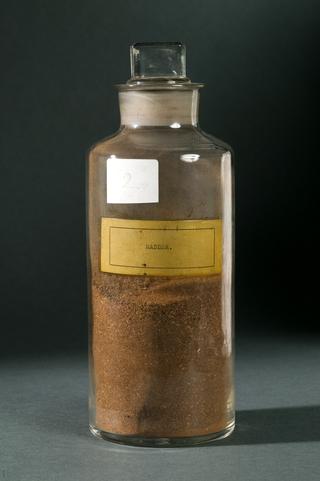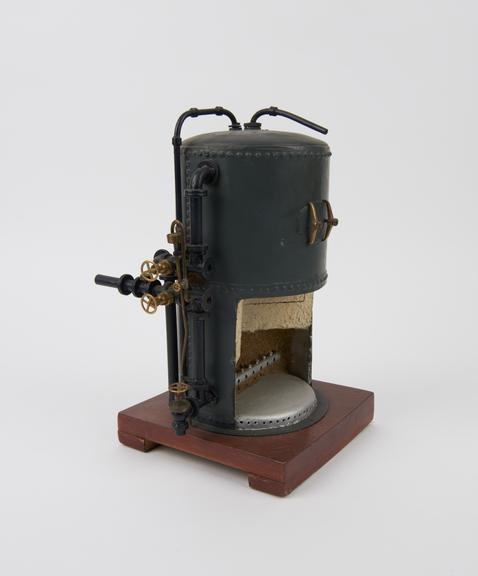
Model of Permutit type water softener.

Model of Permutit type water softener.
This model represents a plant for softening hard water continuously, on a large scale, by the "Permutit" process, introduced by Gans in 1905.
Permutit is the name given to an artificially prepared hydrated silicate of sodium and aluminium. Similar compounds occur in nature as minerals known as the zeolites.
When hard water is allowed to percolate through a bed of permutit, the substances that cause hardness, i.e. calcium and magnesium salts, react with the permutit, the metals combining with it and displacing an equivalent quantity of sodium, which passes into solution. The calcium and magnesium being thus removed, the water is softened. At the same time, the original sodium permutit is converted into a mixture of the corresponding calcium and magnesium compounds, and in consequence, loses its activity. It may be easily regenerated, however by slowly passing a solution of sodium chloride (common salt) through the filter bed, when the calcium and magnesium previously fixed by the permutit pass again into solution as chlorides and the bed is once more ready for work.
The permutit bed (white) is contained in a cylindrical iron vessel and rests upon a layer of clear sand (brown) which serves to clarify the water after its passage through the permutit.
Details
- Category:
- Industrial Chemistry
- Object Number:
- 1925-563
- type:
- model, water softener
- credit:
- United Water Softeners Limited




